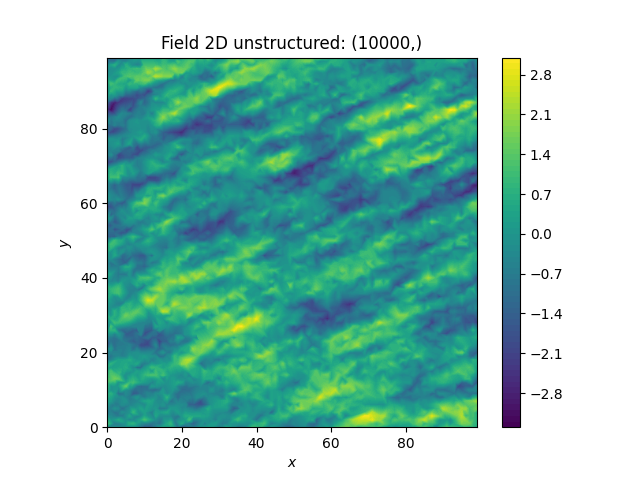Note
Go to the end to download the full example code
Using an Unstructured Grid
For many applications, the random fields are needed on an unstructured grid. Normally, such a grid would be read in, but we can simply generate one and then create a random field at those coordinates.
import numpy as np
import gstools as gs
Creating our own unstructured grid
seed = gs.random.MasterRNG(19970221)
rng = np.random.RandomState(seed())
x = rng.randint(0, 100, size=10000)
y = rng.randint(0, 100, size=10000)
model = gs.Exponential(dim=2, var=1, len_scale=[12, 3], angles=np.pi / 8)
srf = gs.SRF(model, seed=20170519)
field = srf((x, y))
srf.vtk_export("field")
# Or create a PyVista dataset
# mesh = srf.to_pyvista()
ax = srf.plot()
ax.set_aspect("equal")

Comparing this image to the previous one, you can see that be using the same seed, the same field can be computed on different grids.
Total running time of the script: ( 0 minutes 1.184 seconds)